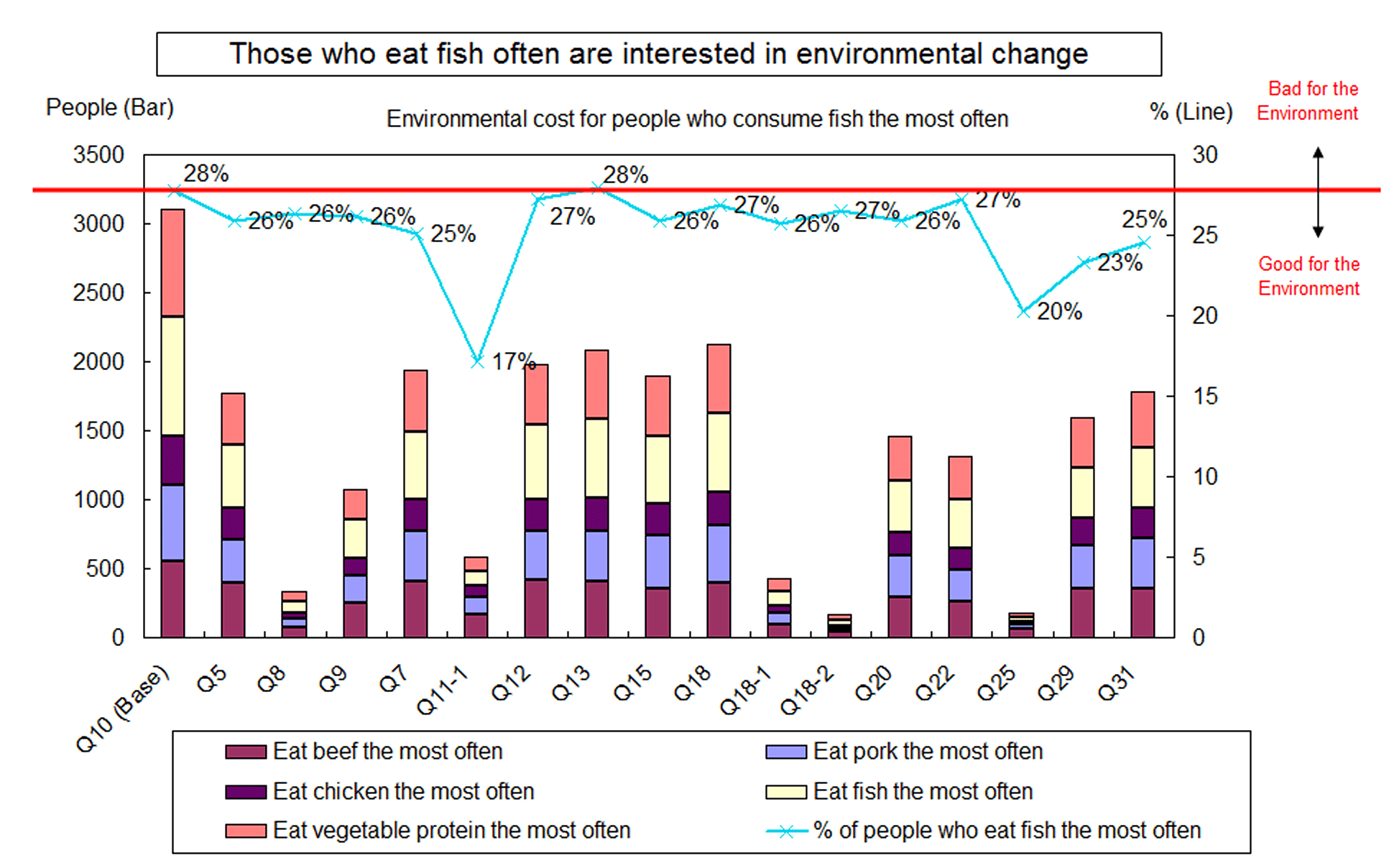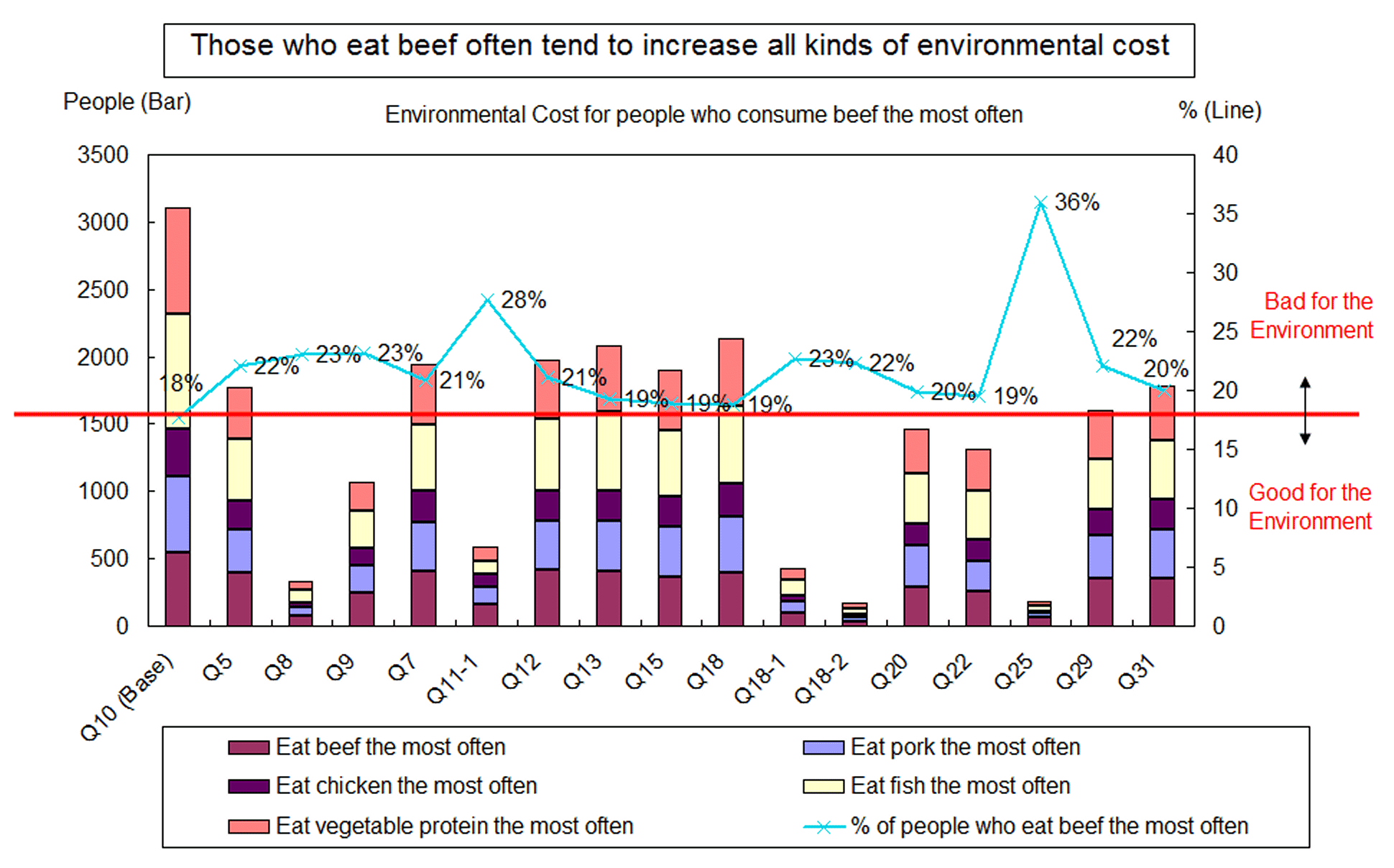Analysis of the results -Respondents' environmental impacts 1-
Method
We picked 16 questions from the survey to analyze the respondents' envrionmental impact. The 16 questions represent environmentally undesirable behavior.
Example of the results of analyses:
・Those who eat fish often have the tendency to be interested in environmental issues.
・Those who do not use their own shopping bags tend to increase environmental impact in many aspects of life.
Examples of the results of analysis
Interpretation of the graphs
Q10 asks which protein sources (beef, pork, chicken, fish and vegetable protein) people eat more often and specify the order. If you look at the graph on the top,
Next, compare the tendency of people who eat beef the most often.
Go to Analysis 2
We picked 16 questions from the survey to analyze the respondents' envrionmental impact. The 16 questions represent environmentally undesirable behavior.
Example of the results of analyses:
・Those who eat fish often have the tendency to be interested in environmental issues.
・Those who do not use their own shopping bags tend to increase environmental impact in many aspects of life.
| Q5: Those who use vending machines. Q8: Those who do not refill household products. Q9: Those who trow out food containers. Q7: Those who do not bring their own shopping bags. Q11-1: Those who do not consider the seasons of vegetables. Q12: Those who throw out leftover food. Q13: Those who do not unplug electronics/appliances. Q15: Those who do not use energy efficient light bulbs, appliances, etc. Q18: Those who use air conditioners while they sleep. Q18-1 Those who use air conditioners everyday while they sleep. Q18-2: Those who keep the air conditioners running while they sleep during summer. Q20: Those whose prioirty is the price when purchasing electronics/appliances. Q22: Those who do not use remaining water from bathtab. Q26:Those who are not interested in environmental articles on newspapers or environmental programs on TV. Q29: Those who never or rarely talk about environmental problems with their family. Q31: Those who do not consider the materials (natural or synthetic) when they purchase clothes. |
Examples of the results of analysis
 |
 |
Interpretation of the graphs
Q10 asks which protein sources (beef, pork, chicken, fish and vegetable protein) people eat more often and specify the order. If you look at the graph on the top,
- Q10 show the result (base).
- There are 28% people who eat fish the most often.
- The questions 5-31 represents environmentally unfavorable behavior.
- Those who eat the fish most often do not exceed 28% in any of the other questions.
- Which means that "they tend to be more environmentally friendly in many aspects of life."
Next, compare the tendency of people who eat beef the most often.
- 18% of the people eat beef the most often, and they exceed 18% in all other questions.
- This means that "they tend to have more environmental impacts in many aspects of life."
Go to Analysis 2
この改行は必要→